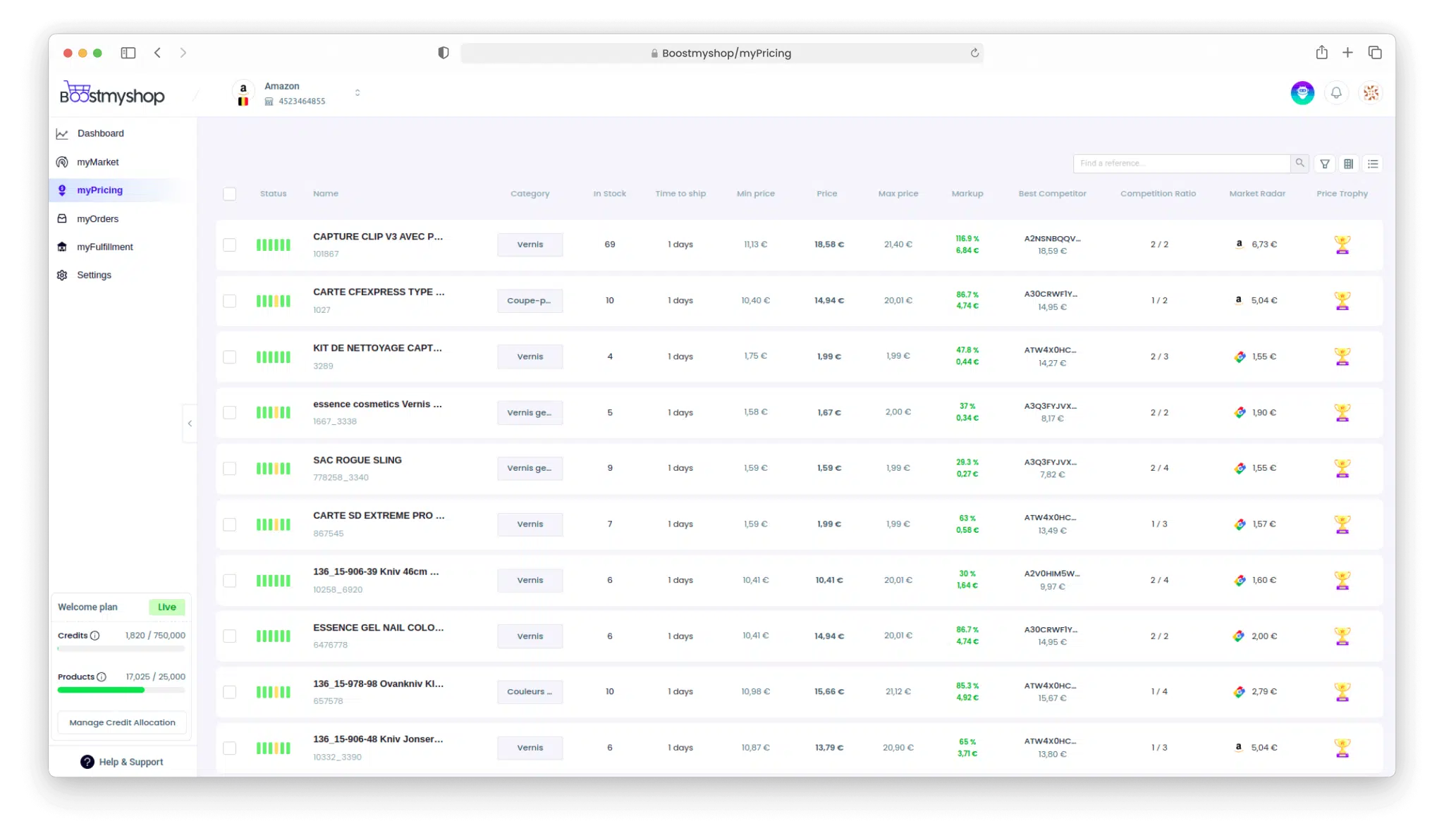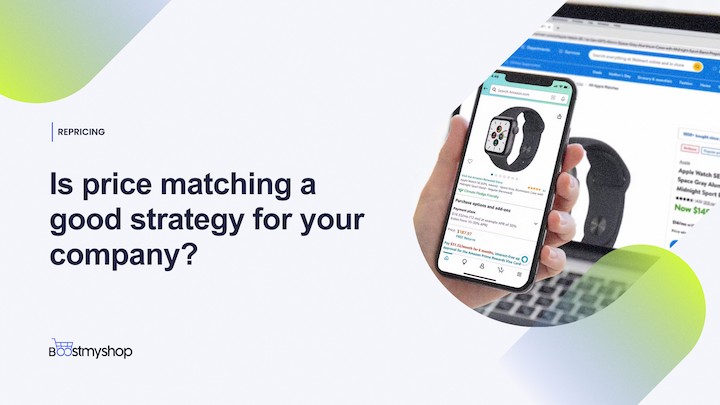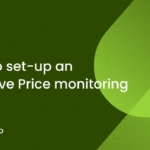Is price matching a good strategy for your company?
Price matching is a marketing technique wherein you match your prices to the competition or refund the difference when your customers find a cheaper price elsewhere. The customer must provide you with proof of the price difference to obtain a refund or match.
With 78% of online shoppers now using price comparison tools before purchases over $50, understanding how to effectively implement price matching can be the difference between capturing sales and losing customers to competitors.
What is Price Matching and Why Does It Matter in 2025?
Price matching is a retail strategy where businesses agree to match or beat competitors’ lower prices on identical products. While traditionally associated with brick-and-mortar stores, e-commerce businesses increasingly use automated price matching systems to remain competitive in real-time.
In 2025’s digital marketplace, the significance of price matching has evolved beyond simple competitive pricing:
67% of major retailers now utilize AI algorithms for dynamic price adjustments based on competitor movements
81% of consumers expect retailers to offer some form of price matching policy or price protection
Companies with strategic price matching programs report 23% higher customer retention rates compared to those without such policies
1. Why use price matching?
When you promise the customer that you will match the competition, they instantly perceive you as a vendor with attractive pricing.
Because what vendor would offer to reduce their margins based on the competition if they were not sure they had the best prices? With price matching, even if some items are cheaper elsewhere, you are sure to recover your losses. When a customer sees price matching, they immediately think, “I’m going to get a good deal”.
This is why this marketing technique is such a good idea!
The main factor in whether or not a customer buys a product is the price. If consumers think you have the lowest prices, they will turn to your brand more often when they need to make a purchase. This means that with price matching, you reduce your margins, but you increase consumer loyalty and your market share.
Another advantage of price matching is that it allows you to improve your brand image. If you can maintain this strategy over the long term, you will become a brand associated with low prices. The consumer will spend their money with you without spending much time thinking about it, assuming that your prices are the best available.
Implement dynamic pricing strategies.
Win buy boxes, make profits and lose no margins.
Book a free demo now
2. What are the weaknesses of price matching?
Like all strategies, price matching has weaknesses. The first, which we have already discussed, is that it reduces your margins. Before implementing this strategy, you should therefore ensure that aligning yourself with the competition will not jeopardise your profitability. If you go bankrupt before you can increase your market share, it’s useless!
The second danger of price matching is that it encourages customers to look at your competitors. When implementing a price matching strategy, you need to make sure that at least a substantial portion of your catalogue is cheaper than the competition. Because if your competitors’ prices are too much lower than yours, customers will not come back to you for price matching. Being able to take advantage of a selection of lower prices from you and the best prices from the competition is what builds customer loyalty on the medium term through this strategy.
3. Weaknesses eradicated with dynamic pricing tools
Today, thanks to dynamic pricing tools, you can limit the risks associated with price matching if you sell on the Internet. Most dynamic pricing tools, like our software myPricing, include monitoring features. They allow you to analyse your competitors’ prices and compare them with your selling prices or cost prices. This way, you can quickly see if you can match the competition.
Using dynamic pricing tools, you can also ensure that you have the best prices on the items of your choice. A dynamic pricing tool allows you to set up pricing rules, which will automate your pricing, making sure your offer is always the best. For example, you can create a rule such as: I want my prices to always be 10% lower than the lowest competing offer. The dynamic pricing tool will then analyse your competitors’ prices and change yours if they do not follow the rule. This automatic price change does not jeopardize your margins if you use myPricing. Our tool allows you to set the minimum margin you wish to achieve on your products. It will never sell them at a price that does not give you that margin.
Price Matching Statistics and Trends for 2025
The landscape of price matching continues to evolve rapidly. Understanding the latest data is essential
for making informed decisions about implementing a price matching strategy for your business:
| Price Matching Metric | 2025 Data | Change from 2023 |
|---|---|---|
| Consumers who check competitor prices before purchasing | 78% | +23% |
| E-commerce businesses offering some form of price matching | 63% | +18% |
| Conversion rate improvement with price matching guarantees | 27% | +7% |
| Cart abandonment reduction with price guarantees | 31% | +12% |
These statistics highlight why price matching has become a cornerstone strategy for competitive retailers in 2025’s marketplace environment.
How to Implement an Effective Price Matching Strategy
Successfully implementing price matching requires a strategic approach that balances competitive positioning with profitability. Follow these steps to develop an effective price matching program for your business:
1. Define Your Price Matching Policy Parameters
Every effective price matching strategy begins with clear parameters:
- Competitor qualification: Which competitors’ prices will you match?
- Product scope: Will you match prices across your entire catalog or only specific categories?
- Match limitations: Will you match only advertised prices or include promotional offers?
- Verification process: How will you verify competitor prices before matching?
- Match timeframe: Will you offer post-purchase price matching within a certain period?
2. Set Up Automated Price Monitoring
Manual price matching is no longer viable in 2025’s dynamic marketplace. Implement automated solutions to:
- Monitor competitor prices in real-time across multiple channels
- Identify pricing trends and competitive movements
- Generate alerts when key competitors change prices on matching products
- Analyze the potential impact of price matches on your margins
3. Create a Clear Communication Strategy
For price matching to drive conversions, customers need to know about your policy:
- Prominently display your price match guarantee on product pages and at checkout
- Train customer service staff to handle price matching requests efficiently
- Create a dedicated page explaining your price matching policy in detail
- Highlight successful price matches in marketing communications
In summary:
Price matching is a good technique if you want to quickly increase your market share. Before you start using price matching, however, you need to make sure that you are able to match the competition without jeopardising your profitability. You also need to ensure that you have a wide selection of items that are cheaper than your competitors. Otherwise, price matching will drive your customers to the competition. Fortunately, with a dynamic pricing tool, you can manage these risks.
Frequently Asked Questions
What is the difference between price matching and price beating?
Price matching involves matching a competitor’s lower price on an identical product. Price beating takes this a step further by offering an additional discount (typically 5-10%) below the competitor’s price. While price beating can be more effective for customer acquisition, it typically has a greater impact on profit margins than standard price matching.
Does price matching work for all types of e-commerce businesses?
Price matching effectiveness varies by business model and product type. It works best for retailers selling branded products that consumers can easily compare across multiple websites. Businesses offering unique products, custom items, or exclusive merchandise may benefit less from price matching strategies and should focus on value differentiation instead.
How do I balance price matching with maintaining healthy margins?
Balancing price matching with profitability requires a selective approach. Successful retailers typically implement price matching on high-volume, high-visibility products that drive price perception, while maintaining higher margins on accessories, add-ons, and less price-sensitive items. Advanced price matching software can help identify which products should qualify for matching based on competitive positioning and margin impact.


